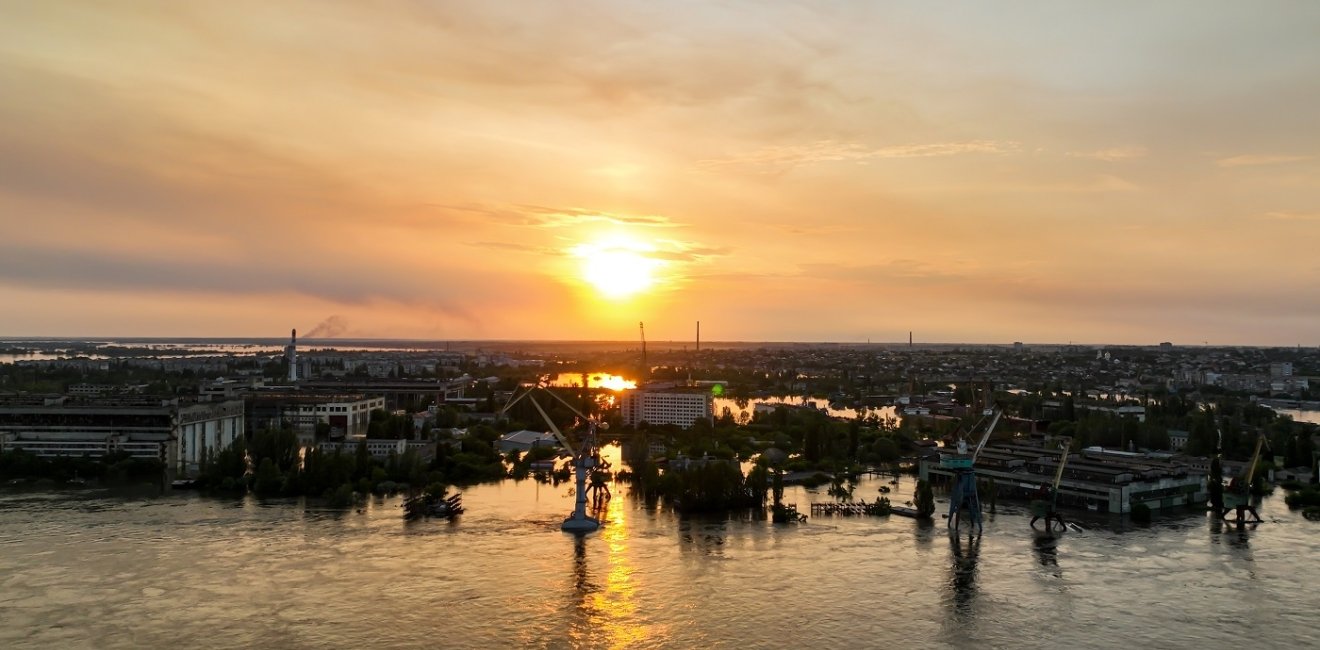
A blog of the Kennan Institute
Russia continues to illegally occupy Crimea and parts of four southeastern oblasts of Ukraine. On September 1–4 and September 8–10, 2023, the remaining population of these areas went through a new humiliating experience—local elections. This was the first electoral campaign run by Moscow in the occupied parts of Donetsk, Luhansk, Kherson, and Zaporizhzhya oblasts. The “elected” members of the “regional legislatures” will soon appoint executive bodies in these territories and in Crimea, if no changes occur on the front line.
From the 1990s through the early 2000s, elections functioned as a rather democratic institution in Russia. But with the rise of Vladimir Putin’s autocratization, elections were reinvented as an exercise in bargaining among federal, regional, and local elites and communities with the government for the distribution of resources. Additionally, regional and local elections were the period when local elites demonstrated to the federal “center” their ability to get the best electoral results, ones that would serve well for the next presidential elections, in which Putin must achieve ever-growing, clear, popular support.
It is in this context that the Ukrainian citizens who remain in the regions captured by the Russian army find themselves. In these elections, they learn how to survive under illegal Russian occupation. Simultaneously, the local elites learn how to integrate themselves into the Russian patronal pyramid. The results of this learning process are quite murky. For example, it is close to impossible to state what percentage of inhabitants in the occupied lands of Ukraine indeed voted. In Russia, approximately 25 percent of the participants voted remotely, with the use of electronic devices. But in the occupied Ukrainian territories, this estimate was probably inflated for security reasons.
During the prolonged voting days, many electoral stations were closed because of shelling or drone attacks. The electoral commissions were leaving for shelters on many occasions on the last voting day, September 10. I talked to several people still living in Berdiansk, Donetsk, Henichesk, and Luhansk, and their common line was that the stations were empty when they saw them. But they also reported that the “mobile electoral commissions” were going around streets and blocks to get votes on the spot for all 10 days before September 10.
In general, the United Russia Party (URP), the classical post-Soviet power party consisting of central and local power elite groups and bureaucrats, demonstrated two things in this campaign, across 85 Russian regions and localities. First, it is still the most popular (popular in a very specific authoritarian context) political organization. And second, it remains the best electoral structure for Putin to use for the March 2024 presidential elections. But it is worth paying attention to the fact that the candidates (whether from the URP or the other parties) who presented themselves as the biggest supporters of Russia’s war against Ukraine did not achieve electoral victories in most Russian regions.
However, according to the regional electoral commissions (which function illegally, according to Ukrainian legislation), the pro-war and most anti-Ukrainian figures—like Denis Pushilin, Leonid Pasechnik, Yevgeny Balitsky, and Vladimir Saldo, the Kremlin-appointed temporary governors of the captured regions—were ascribed the biggest portion of votes in the occupied territory. This result is defined by Russian occupying authorities, not by the inhabitants of the war-torn settlements in southeastern Ukraine. By asserting it, the Kremlin plans to keep full control of newly created “regional legislatures” (or else “legislative assemblies”) that will consist of 90 deputies in Donetsk oblast, 36 members in Kherson oblast, 50 deputies in Luhansk oblast, and 40 deputies in Zaporizhzhya oblast. These assemblies will appoint the “regional governments” by the end of October.
Election results that do not match the reality of voting constituencies can be witnessed in other instances. For example, the Russian media report the commissions’ claims that 72 percent of the Luhansk oblast voters, 68 percent of Zaporizhzhya oblast voters, 65 percent of Kherson oblast voters, and 76 percent of Donetsk oblast voters participated in these elections. These are definitely false claims, as so many voters have left these regions. My assessment is that the remaining population in these four oblasts is well below 30 percent of the 2021 population, so the “elected” members of the new “regional legislatures” can neither claim to be elected by a serious number of voters nor pretend to be representative of these constituencies.
Also, the electoral commissions ascribed victory to the URP in all four “regional legislatures.” For example, in Kherson the votes were ascribed this way: URP, 74.86 percent (which translates into 28 seats); Communist Party of the Russian Federation, 10.56 percent (four seats); Liberal Democratic Party of Russia, 8.27 percent (3 seats); and the Just Russia—For Truth Party, 5.03 percent (one seat). And in the captured districts of Zaporizhzhya oblast, the URP was ascribed 83 percent of the vote (34 seats), while the CPRF was allocated 5.02 percent (two seats), the “Fair Russia” party was given 5.13 percent (two seats), and the LDPR received 5.82 percent (two seats). The “winner” of these elections has been assigned with no connection to the remaining population’s will.
But it is important to see where the electoral result leads. The URP has won the majority of seats in the four “regional legislatures,” setting up the structure for future presidential elections and further integration with the Ukrainian population which remains in the occupied areas. If the front line remains unchanged in southeastern Ukraine, the local “authorities” will provide the Kremlin with the same result in the March 2024 presidential elections as they did in Crimea in the 2020 campaign. According to the latter, Putin claimed 92 percent of Crimeans’ votes; in Russia, his average was 76 percent.
There is no doubt that the local elections in the captured Ukrainian territory are a prologue to the fraudulent presidential elections in 2024. The results will also be used to appoint regional governments that Moscow will promote as legitimate authorities in the illegally occupied territories of Ukraine. There are very good reasons for the fact that the results of these elections were recognized neither by the U.S. and G7, nor by the UN, nor by the EU.
The opinions expressed in this article are those solely of the author and do not reflect the views of the Kennan Institute.
Author


Kennan Institute
After more than 50 years as a vital part of the Wilson Center legacy, the Kennan Institute has become an independent think tank. You can find the current website for the Kennan Institute at kennaninstitute.org. Please look for future announcements about partnership activities between the Wilson Center and the Kennan Institute at Wilson Center Press Room. The Kennan Institute is the premier US center for advanced research on Eurasia and the oldest and largest regional program at the Woodrow Wilson International Center for Scholars. The Kennan Institute is committed to improving American understanding of Russia, Ukraine, Central Asia, the South Caucasus, and the surrounding region through research and exchange. Read more

Explore More in Focus Ukraine
Browse Focus Ukraine
Talking to the Dead to Heal the Living

Ukrainian Issue in Polish Elections


